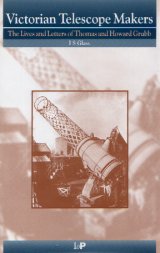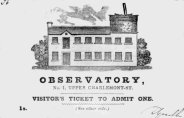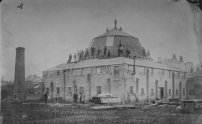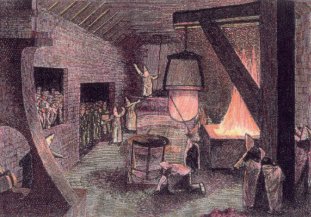Actually, I wanted to call it Grubb Dublin, the name that
appeared on their instruments, but the publisher decided otherwise.
For 95 years Thomas and Howard Grubb, father and son, supplied
astronomical instruments to the world. The book contains extensive
quotations from their original letters and papers, allowing them to
speak for themselves. Their story is one of the development of a small
firm of surprising technological sophistication from its
beginnings in 1830 as a metal billiard-table manufacturer to its eventual
position as one of the major telescope makers of the Victorian era.
The cover (right) shows the Great Melbourne Telescope, as erected in Grubb's yard in Rathmines, Dublin, in 1868, shortly before it was shipped to Melbourne.




